GIGABYTE GB-BXi7H-5500 Broadwell BRIX Review
by Ganesh T S on January 29, 2015 7:00 AM ESTGaming Benchmarks
Intel's integrated GPUs don't have a big name in the gaming community. Once in a while, Intel throws in a surprise. In the Haswell family, CPUs with Iris Pro graphics gave a pleasant surprise to casual gamers. In this section, we will identify whether the Intel HD Graphics 5500 in the Core i7-5500U can provide an acceptable gaming experience.
For the purpose of benchmarking, we chose four different games (Sleeping Dogs, Tomb Raider, Bioshock Infinite and DiRT Showdown) at three different quality levels. As someone focusing on HTPCs and multimedia aspects, I rarely get to process gaming benchmarks, even while evaluating GPUs. One of the aspects that I feared was spending lot of time in installing the same games again and again on different PCs under the review scanner. The solution was to go the Steam route. Unfortunately, Steam also likes to keep the game files updated. A quick online search revealed that Steam could make use of an external drive for storing the game executables and downloadable content. With the Steam drive on-the-go use-case being read-heavy, the Corsair Flash Voyager GS USB 3.0 128GB Flash Drive (with read speeds of up to 275 MBps) was ideal for use as a portable Steam drive.
Sleeping Dogs
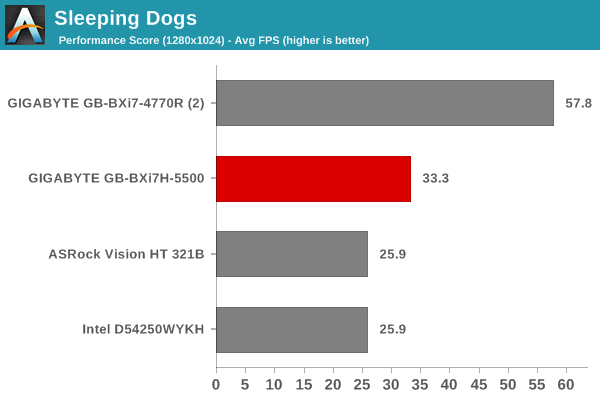


Tomb Raider
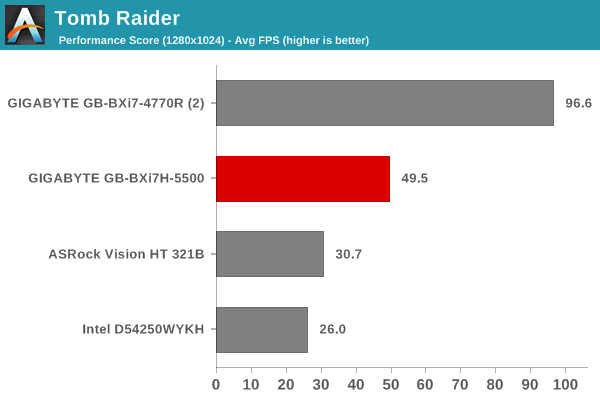
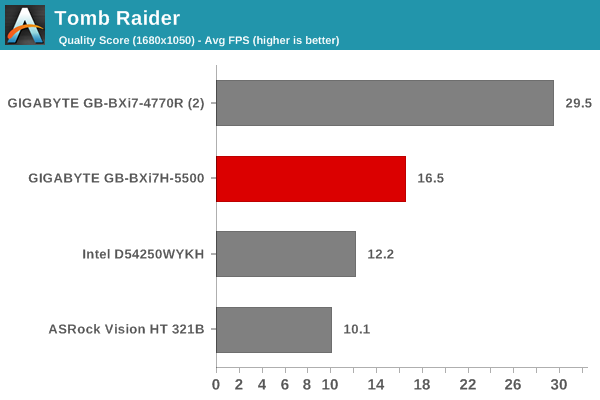
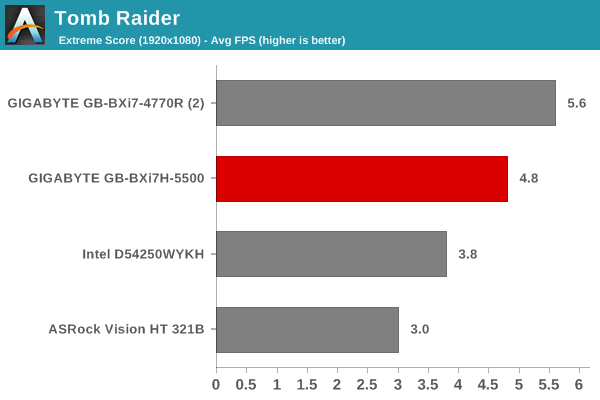
Bioshock Infinite
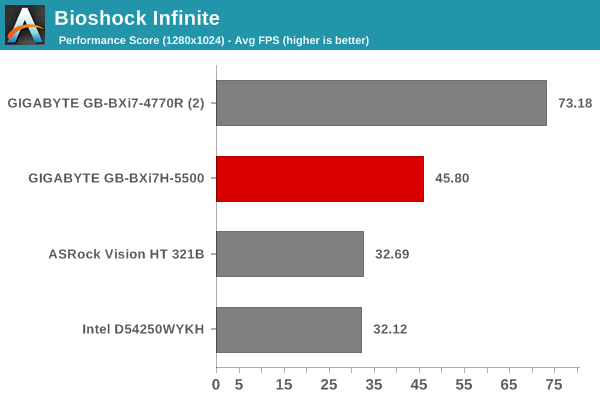
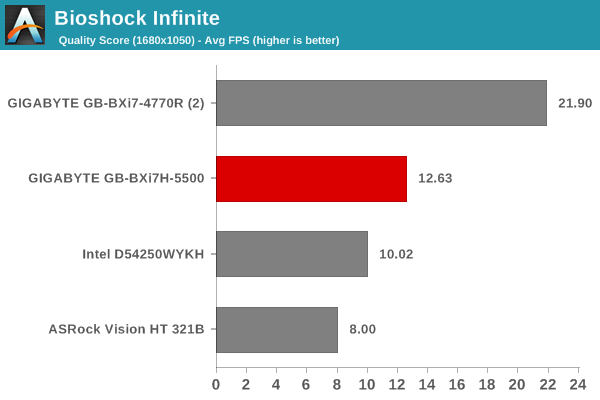
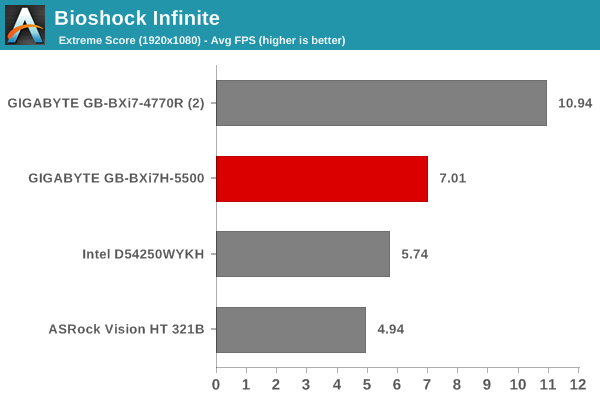
Tomb Raider
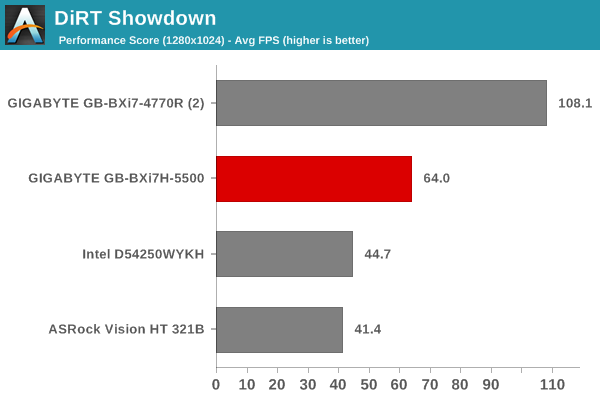
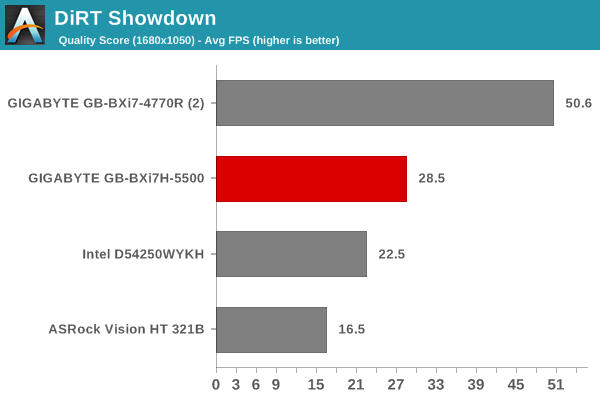
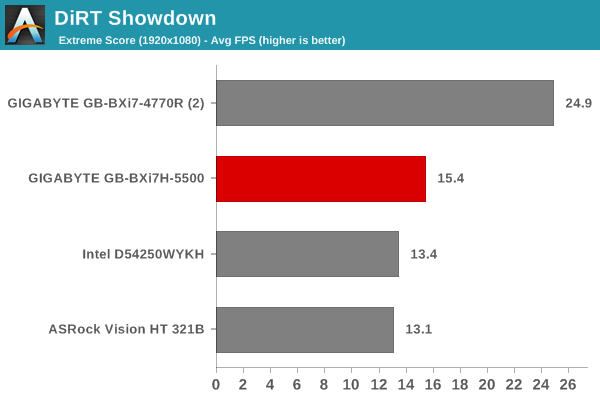
All the gaming benchmarks show a clear trend - users are getting better and better gaming performance with each successive generation of Intel GPUs. The Iris Pro-equipped systems still lead the pack by quite a distance, but, the power consumption profile is quite different. For the considered games, the GB-BXi7H-5500 can provde 30+ fps only in the lowest quality settings. These results are not entirely unexpected for Broadwell GT2. Systems based on Broadwell GT3e graphics (Iris Pro) are going to be the ones targeting the gaming community.










53 Comments
View All Comments
kgh00007 - Thursday, January 29, 2015 - link
No mention of the i7-5500U turbo speeds?3GHz single core turbo and 2.9GHz dual core turbo, source notebookcheck.
voicequal - Saturday, February 7, 2015 - link
These were provided in a previous article.http://anandtech.com/show/8814/intel-releases-broa...
Shadowmaster625 - Thursday, January 29, 2015 - link
The only people who would pay that much money for so little performance already gave their money to apple.gr8pcguy - Thursday, January 29, 2015 - link
Doesn't it bother anyone that the box is printed with the statement "Supports 2.5" Hard Drivers"? Obviously Gigabyte needs to do a bit of QA on their package production line!Refuge - Thursday, January 29, 2015 - link
Ha! I noticed this to when I first clicked the link.Hopefully they fix the typo before full production for consumers. :P
skifiddle - Saturday, January 31, 2015 - link
to?Refuge - Thursday, January 29, 2015 - link
The Brix, now supports 2.5" Hard "Drivers"Is this some kind of new, super strong drivers for our HDD's?
And yes, this is me being sarcastic :P
tspacie - Thursday, January 29, 2015 - link
The huge iGPU BIOS carve-out intrigues me. Does the iGPU not handle allocations in shared system memory (in 4K pages) ?Pissedoffyouth - Thursday, January 29, 2015 - link
Nah, neither does AMD APUs. You lose whatever you allocate.rootheday3 - Friday, January 30, 2015 - link
the BIOS carve out is not necessary. The bios reserves a little (~32mb) for some internal data structures used by the driver (graphics page tables, memory for content protection, auxilary buffer for display frame buffer compression). Otherwise, the driver gets allocations out of system memory from the OS to map into the graphics page tables.the DVMT pre-Allocated is a hold over from Windows XP driver model and is no longer meaningful since Vista. In fact, if the OS comes under memory pressure and starts asking the driver to stick data into that "dedicated" segment, the PCI aperture copy/swizzle process used to load the data is slower than if the driver simply used OS allocations. Likewise, on standby/hibernate the OS "pages out" all the data from dedicated segment to "normal" memory which is slow... whereas for normal system allocations on iGPU, the pages are just "there" - no extra copy required.
The sole exception is a handful of games that are incorrectly coded to look for "Dedicated" graphics memory from OS API call and then make bogus decisions based on that (e.g. refuse to run=>PES, restrict available game resolution/settings =>SW:TOR, older Total War games, render incorrectly because they think they don't have room to load textures =>GTA IV). For this small set of games, having the BIOS option to preallocate memory (which the driver won't actually use) is a workaround to fool them into running correctly.